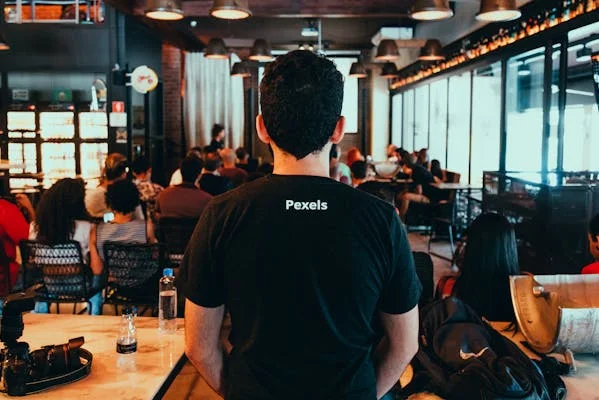Creating the ideal back casting room requires meticulous planning, attention to detail, and a clear understanding of its purpose. Whether you’re building a facility for industrial use, training environments, or creative projects, having an optimized back casting room is vital for efficiency and functionality. This guide will walk you through everything you need to know about back casting rooms, from their purpose and design considerations to tips for optimizing performance. By the end of this post, you’ll have actionable insights to create an ideal back casting setup.
What is a Back Casting Room?
At its core, a back casting room is a specialized space designed for precise tasks, such as film or industrial casting processes. The room facilitates controlled conditions to ensure accuracy, productivity, and top-quality outcomes for the desired task. Back casting rooms are often found in industries like filmmaking, manufacturing, and creative media.
Purpose and Applications of Back Casting Rooms
The primary purpose of a back casting room is to provide a space that supports creative or industrial processes requiring meticulous planning and execution. Here’s where they are commonly used:
- Film and Visual Arts: Used to create realistic visual effects or capture intricate details for film production.
- Manufacturing and Prototyping: Back casting rooms offer controlled environments for producing prototypes or components with precision.
- Training and Simulation: Spaces optimized for recreating real-life scenarios or providing hands-on skill-based training.
Key Considerations for Building a Back Casting Room
When designing a back casting room, the setup must account for specific needs and requirements. Below are the essential factors to ensure optimal functionality.
Space Planning and Layout
The layout of your back casting room is crucial for maximizing efficiency.
- Adequate Space: Plan enough square footage to accommodate your equipment, tools, and team comfortably. Avoid overcrowding.
- Ergonomic Design: Arrange equipment and workstations to promote natural movement and minimize physical strain.
- Dedicated Storage Areas: Allocate space for storing tools and materials when not in use to keep the room organized.
Lighting and Visibility
Proper lighting is one of the most vital aspects of any back casting room. Without the right lighting setup, accuracy and work quality may suffer.
- Ambient Lighting: Install general lighting suitable for wide coverage.
- Task Lighting: Use focused light sources for tasks that demand attention to detail, such as casting fine materials.
- Adjustability: Use dimmable lights or shading to customize brightness levels as needed.
Ventilation and Airflow
For rooms handling chemicals, materials, or even elaborate setups like smoke machines, airflow is crucial.
- Ventilation Systems: Ensure proper air circulation to prevent buildup of fumes.
- Cooling or Heating: Temperature control helps maintain ideal working conditions.
- Humidity Control: Especially important in manufacturing, this prevents issues such as warping or cracking.
Materials and Wall Finishes
Choose appropriate wall materials that align with the room’s intended use.
- Soundproofing (for creative industries): Reduce noise interference while recording or filming.
- Durable Surfaces (for manufacturing): Use materials that can withstand heavy use, wear, and tear.
- Non-reflective Finishes (for filming): Minimize unwanted light reflection or glare.
Equipment and Tools for a Fully Functional Back Casting Room
Equipping your back casting room with the right tools and equipment ensures seamless workflow.
Essential Equipment for Modern Back Casting Rooms
Casting Equipment
- Mold-making kits for industrial casting setups.
- High-resolution cameras and studios for filmmaking purposes.
Safety Gear
- Hardhats, gloves, or masks for rooms dealing with hazardous materials.
Storage Solutions
- Modular shelving or cabinets to house casting materials efficiently.
Monitors and Screens
- If used for filming or reviewing content, having large, high-quality screens is essential for reviewing output.
Tips for Optimizing Your Back Casting Room
Once you’ve designed and equipped your back casting room, enhancing it for productivity is the next step.
Organize for Efficiency
A clutter-free back casting room leads to improved focus and reduced errors. Here’s how you can organize effectively:
- Label tools and materials for easy identification.
- Implement a “one-task-at-a-time” workflow; avoid multitasking in confined areas.
Leverage Technology
Automation
- Use automated tools to save time and minimize manual errors.
Smart Monitoring Systems
- Install sensors for temperature and humidity monitoring.
Collaboration Tools
- Use project management software or cloud storage platforms to streamline collaborative efforts.
Regular Maintenance Checks
Regular evaluation of equipment, ventilation, and lighting systems ensures long-term productivity. Schedule inspections every quarter to identify and fix issues before they disrupt processes.
Common Challenges in a Back Casting Room
While a back casting room offers a versatile workspace, challenges can arise if you don’t prepare in advance.
Limited Space
Without ample space, overcrowding of equipment and tools can reduce workflow efficiency.
Solution: Invest in foldable or stackable tools, and create vertical storage solutions.
Noise Interference
Rooms near high-traffic areas may face distractions due to external noise.
Solution: Use soundproof panels to isolate the room and create a quiet workspace.
Environmental Hazards
Chemical fumes or poor ventilation can lead to safety hazards while working.
Solution: Install advanced HVAC systems and provide thorough staff training for hazard mitigation.
Building a Back Casting Room that Stands Out
Your back casting room can be more than just functional; it can also serve as a place for innovation and creativity. For industries like film production, investing in unique design elements such as modular lighting setups or rotating platforms can help you push creative boundaries. For businesses handling advanced manufacturing, integrating lean manufacturing principles into the layout will help drive operational efficiency.
Partner with Experts to Perfect Your Back Casting Room
Designing a back casting room from scratch can be overwhelming. By consulting experienced designers or engineers specializing in industrial layouts, you can optimize every square inch of new or existing spaces.





